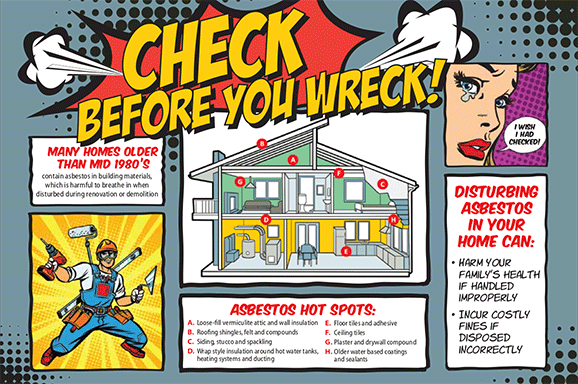Inspection & Testing
When is asbestos a hazard?
Asbestos is a hazard to health when fibers from asbestos containing products are damaged or disturbed, become airborne, and are then breathed into the lungs.
Asbestos fibers exposed to the lining of the lungs are known to cause an aggressive form of cancer called mesothelioma. Prognosis for this form of cancer is very poor, and therefore Health Canada has developed a strict set of regulated guidelines for asbestos removal when the risk is present of asbestos fibers becoming airborne, such as during renovations, demolition or following a damaging event such as flooding.
Asbestos products in good condition (not deteriorating or damaged) are likely not releasing airborne fibers. Do not touch or otherwise disturb products suspected of containing asbestos.
How do I know if I have asbestos?
Straight Line Contractors is certified and experienced in identifying possible sources of asbestos with a site visit to perform a visual inspection which complies with OH&S policies and procedures.
Should potential hazards be identified in the inspection, sampling and lab testing will then be recommended to confirm or rule out presence of ACM (Asbestos Containing Materials) in suspect building materials.
We use an independent third party lab to test all physical and air samples.
Our extensive construction experience combined with our specialized asbestos awareness and abatement certification and experience is a winning combination in ensuring your building is safe in every circumstance.
Where is ASBESTOS FOUND?
Asbestos was used in a variety of construction materials until the 1980’s, therefore it is wise to test for asbestos if any demolition or renovation is being planned on a building constructed before 1990.
The following are common materials which could contain asbestos:
- Loose-fill vermiculite insulation in attics, walls and cinder-blocks
- Roofing shingles and roofing felt
- Siding and stucco
- Wrap style insulation on hot water tanks, ducting and boiler pipes
- Floor tiles and flooring glue
- Ceilings tiles
- Plaster and drywall mud
- Older water-based coatings such as roofing compounds, spackling, sealants, paint, putty and caulking
